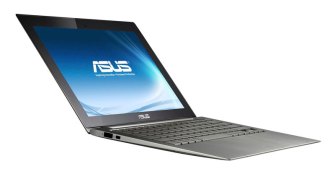 Intel is aiming for its new category of personal computer, the super slimline Ultrabook, to take 40 percent of the laptop market by the end of next year. To do this, it’ll have to achieve a number of things, including successfully fighting off the threat posed by tablet computers, and finding a way of preventing consumers taking an interest in Apple’s similarly slimline MacBook Air. Of course, this means the Ultrabook has to be a reliable, attractive and user-friendly product and, perhaps most importantly, one that is competitively priced.
Intel is aiming for its new category of personal computer, the super slimline Ultrabook, to take 40 percent of the laptop market by the end of next year. To do this, it’ll have to achieve a number of things, including successfully fighting off the threat posed by tablet computers, and finding a way of preventing consumers taking an interest in Apple’s similarly slimline MacBook Air. Of course, this means the Ultrabook has to be a reliable, attractive and user-friendly product and, perhaps most importantly, one that is competitively priced.
To have any chance of hitting the 40 percent target, analysts believe the price of Ultrabooks needs to be reduced to those of notebooks, which sell for around $699. Two models launched by Asus this month, the UX21 and UX31 Zenbooks, are selling for $999 and $1,099 respectively.
Speaking to Reuters on Tuesday from his base in Singapore, Navin Shenoy, Intel’s vice president of sales and marketing and general manager for the Asia-Pacific region, called Intel’s 40 percent target “challenging.”
“In order for that to happen the price has to come down,” he said. “At some point you’ll have to be at [the $699] price point, but it doesn’t have to be overnight. It takes time to engineer a cost down.”
Shenoy believes that a reduction in cost can only come as the result of a cooperative effort between all companies involved with the Ultrabook.
“Even if we’re giving the chips away for free, we couldn’t hit the price point we want to hit if we don’t work with the rest of the industry,” he said.
Intel certainly has its work cut out if it’s going to hit its target. It won’t be helped by the fact that some companies, Sony and Dell included, have decided to hold on until next year before launching their Ultrabooks.
It’s thought they want to wait for the arrival of the new Ivy Bridge chip, which is expected to provide improved performance over the Sandy Bridge chip currently being used.
